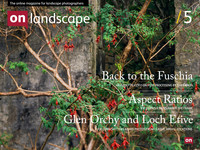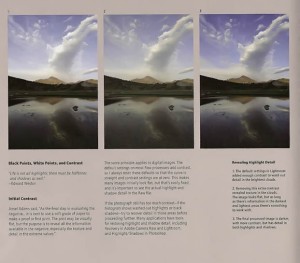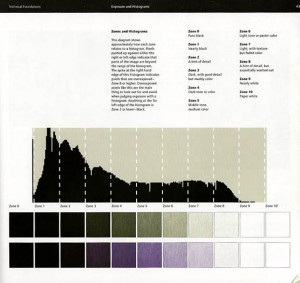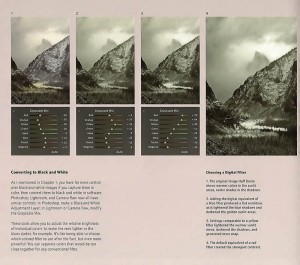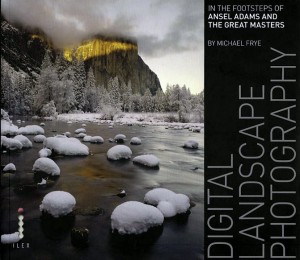Book review

Doug Chinnery
I am an artist working with images full of colour and movement in an attempt to express what I see around me. Inspired by artists, in particular the impressionists and abstract impressionists as well as Chris Friel and Valda Bailey, I work in abstraction trying to capture mood and emotion. I live in obscurity with my wife, Beth, and my buddy, Eddie.
I must confess to having sat down to read this book with little enthusiasm.The book stores are full of ‘guides to digital photography’, promising much but delivering little of real value. My enthusiasm hit rock bottom when I read the sub title of the book - ‘In the Footsteps of Ansel Adams and the Great Masters’. Was this to be yet another photographer trying to make money piggybacking on the name of Ansel Adams?
However, within a few pages I was warming to Mr. Frye and his approach. To begin with, he does live close to Ansel Adam’s beloved Yosemite and has photographed and taught extensively there. Indeed, he has been privileged to have exhibited in the Ansel Adams gallery.
On inspection, you can see why. His images are accomplished and he has captured the spirit of Yosemite, its unpredictable and dramatic weather and light very well.
He uses his images and those of Ansel Adams and Eliot Porter to great effect to illustrate his lessons in improving our digital images. The book is peppered with quotes from these renowned image makers and he draws on many of their techniques.
Most interesting is his section on using the ‘Zone System’ which was developed by Adams and his fellow instructor, Fred Archer, at the Los Angeles Art Centre. It was a system used to improve the quality of black and white images by focusing on contrast and having a full tonal range in images. Frye in this book shows how to take the principles of this system to help modern digital color photographers improve the quality of their images as well as to fully understand how to expose our images correctly and to be able to visualise the finished image after post-production.
Frye really covers a great deal in this book, but in sufficient depth for it to be useful. It is divided into three main sections. The first is ‘Technical Foundations’ which covers image quality, controlling sharpness in the field, filters, white balance along with exposures and histograms. The second section is entitled ‘Light, Composition and the Art of Seeing’ with chapters on light, directing the eye, composition, simplifying scenes, and capturing a mood. The final section, ‘The Digital Darkroom; Editing, Processing & Printing’ covers workflow, processing order, expanding the contrast range, expanding the depth of field and finally printing images.
In the footsteps of Adams, Frye does not ignore black and white images created digitally and spends some time discussing how to ‘see’ images which will work well in monochrome as well as covering in some depth his techniques for making black and white images from colour digital files. As with all of the chapters and techniques in the book, they are fully illustrated with images to highlight the points he is making.
When I read many of these types of books I find myself getting irritated with the author who so often seems to be parroting misinformation gleaned from unreliable blogs and magazine articles. However, Michael Frye is a man who knows his stuff. His advice is soundly based on a good knowledge of the subject going back many years. His technical approach is almost identical to my own and much of the advice and guidance he dispenses I use when teaching my workshop students.
His use of Adams and other great American photographers of the last century does add weight to his comments and reasoning. Some subjects he covers demand a book (or several volumes) to themselves, such as composition. But in his brief overview he provides sound sensible guidance, not a formulaic reliance on the ‘Rule of Thirds’ and suchlike.
This is an instructive manual. It is ideal for landscape photographers who have grasped the basics and want to move forward. If you are using aperture and shutter priority modes and want to move forward into full manual mode or if you feel you need help developing your understanding of exposure or how to ‘see’ light and its effect on the landscape, this book is ideal. If you know the ‘how’ to do things with the camera but don’t always fully understand the ‘why” you will benefit from the book. I would go so far as to say it is one of the best all round intermediate skills guides I have read and users of digital cameras will find it not only a good read from front to back but a book that gets taken down and used as a reference aid on a regular basis.
I have to say I have learned several very valuable lessons from the book and will be recommending it in future to my workshop participants as a guide to help them develop their skills. It would be nice to be able to buy it in hardback, with the use this book is going to have the soft-back version may become well worn quickly. Some of the sections could be fuller, such as that on composition but all books have finite space and on the whole I think Michael has balanced everything very well. This is a book I will be re-reading and referring too often, I am sure.
Digital Landscape Photography
In the Footsteps of Ansel Adams and the Great Masters
by Michael Frye
www.michaelfrye.com
Published by Ilex
ISBN - 978-1-905814-75-6
Cover price £15.99
Amazon price £9.91
Read our further book review:

